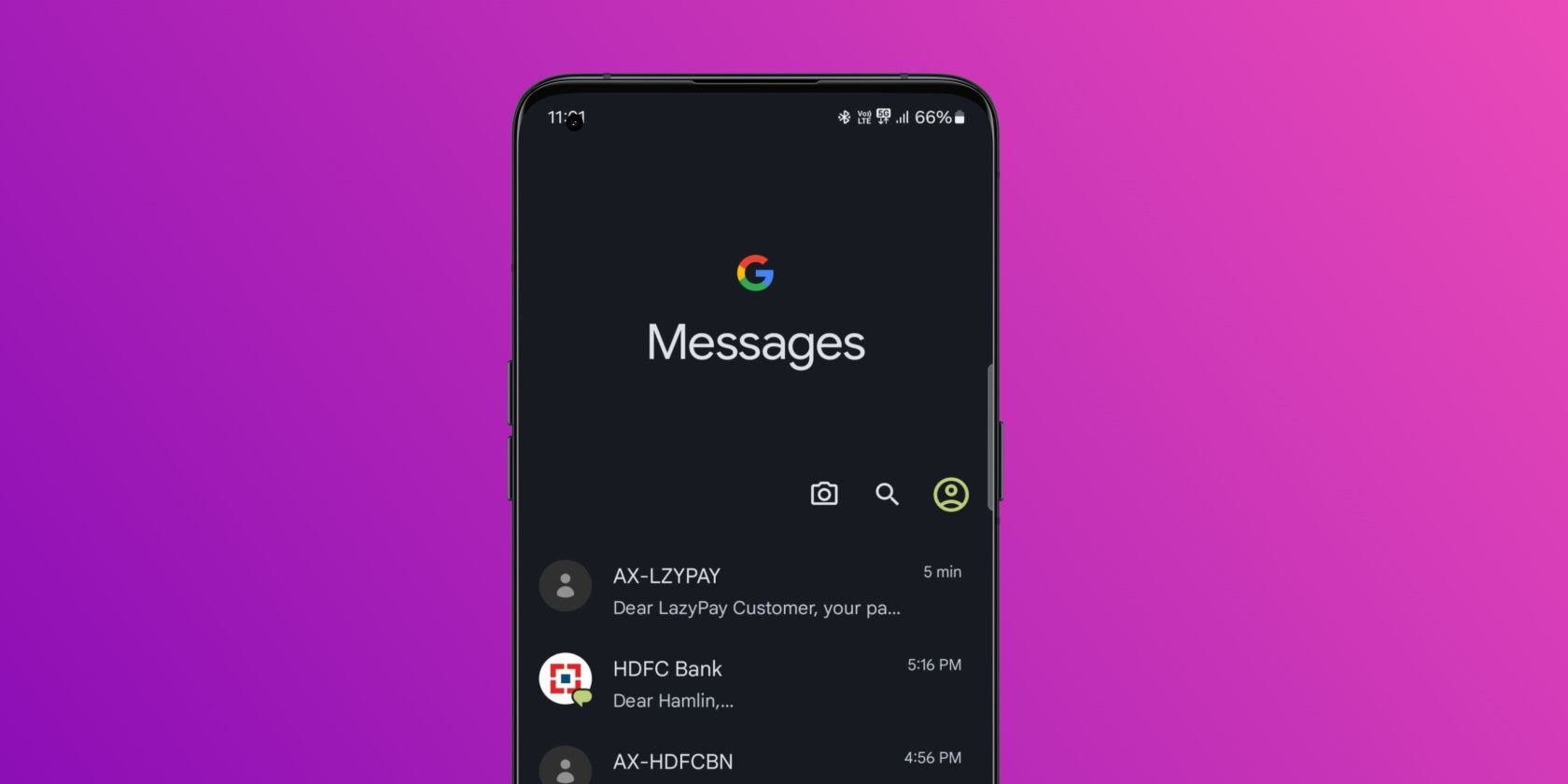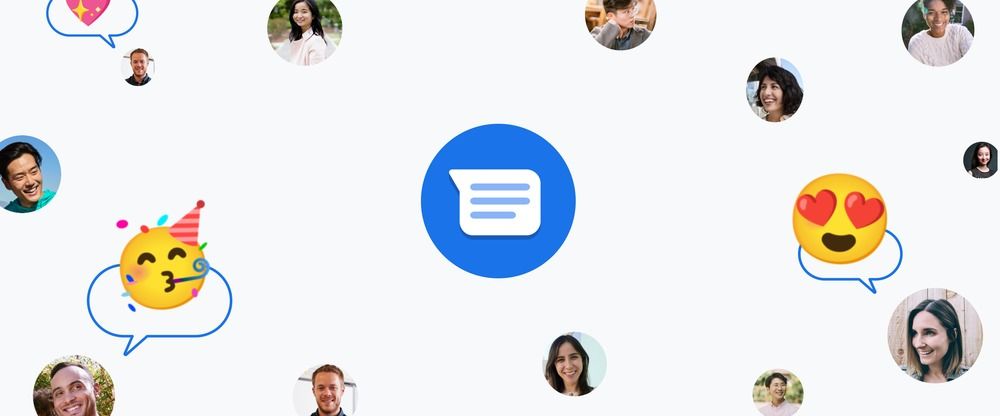Quick Links
Key Takeaways
- RCS is a modern messaging protocol that offers more functionality than SMS and MMS combined.
- RCS includes features like read receipts, typing indicators, larger file sharing, and group messaging.
- If your default messaging app doesn't support RCS, you'll need Google Messages to get started, provided your country or carrier supports it.
You may have come across the terms "RCS messaging" or "RCS chats" in recent years. But what exactly does RCS mean, and how does it differ from SMS/MMS and other instant messaging platforms? We will explain everything below.
What Is RCS Messaging?
Rich Communication Services (RCS) is a modern messaging protocol that's intended to replace traditional SMS and MMS messages. RCS packs richer features, including many of those available on the best instant messaging platforms like WhatsApp, Telegram, and Signal.
RCS also mimics Apple's iMessage in some ways. However, despite being an iMessage rival, Apple plans to add RCS support on iPhones in 2024 via a software update.
A Brief History of RCS Messaging
RCS was created in 2007 by a group of mobile industry players. RCS is based on GSMA's Universal Profile, an industry agreed-upon standard for deploying RCS.
Google first announced it was working on supporting RCS on Android in a 2016 press release as an upgrade to the ubiquitous SMS messaging protocol. Fast-forward a few years, and RCS is now available globally, thanks to the accelerated rollout pace.
RCS Messaging Features
RCS chats introduce several exciting features that make SMS irrelevant. One of them is the ability to see read receipts for your sent messages on top of the delivery time. You can also see a typing indicator, a standard feature on modern instant messaging platforms.
You can send and receive larger files (up to 105MB), so photos and videos will be sent in much higher resolution than MMS. Also, you can react to messages you receive over RCS.
RCS also works differently relative to SMS. It sends messages over cellular data or Wi-Fi as long as the other person also uses RCS. This contrasts with SMS, which is sent over your mobile carrier's network.
Now, let's see how RCS compares to SMS and MMS and what makes the former a game-changer for messaging.
RCS vs. SMS Messages
There's a big difference between RCS, SMS, and MMS. SMS has its own features that make it different from modern instant messaging platforms and even RCS. For example, you do not need a mobile data or Wi-Fi connection to use SMS. It has a minimal barrier for entry, with only a cellular connection and signal needed. For RCS, you'll need to connect to the internet first.
Another distinctive feature is that you don't need to download an additional app to use SMS. Virtually all phones, including feature ("dumb") phones, come with a dedicated SMS app. However, not every Android device comes pre-installed with an RCS-compatible app like Google Messages.
Another difference between RCS and SMS is that each SMS message is limited to 160 characters. This explains why longer texts are split into segments by default when sending a message via SMS. With RCS, you can send lengthy messages well past the 160-character limit.
Sharing multimedia files is also not possible with SMS. This is done using MMS, or Multimedia Messaging Service. MMS has a meager file limit, which is why shared images are typically blurry. As mentioned earlier, RCS surpasses this limit, enabling you to send files of up to 105MB in size.
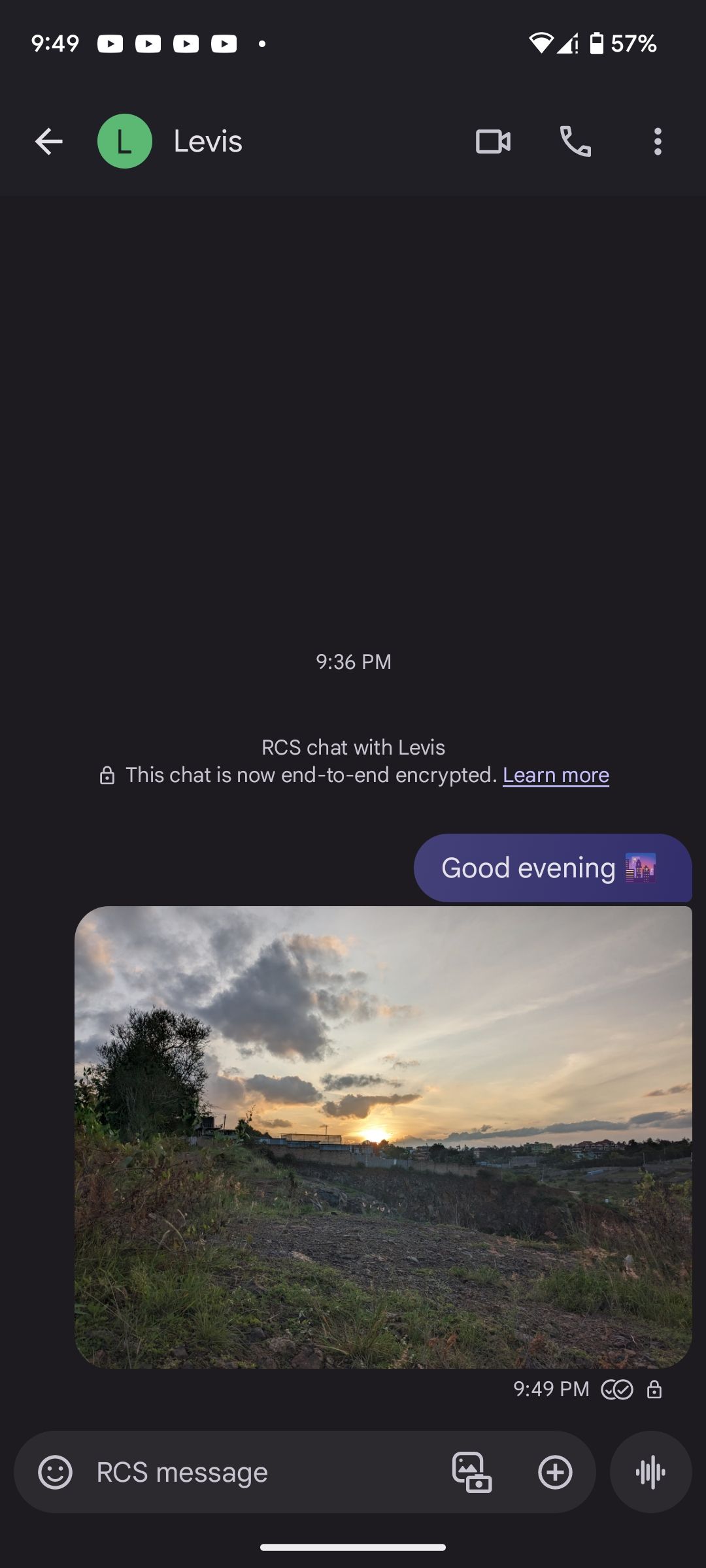
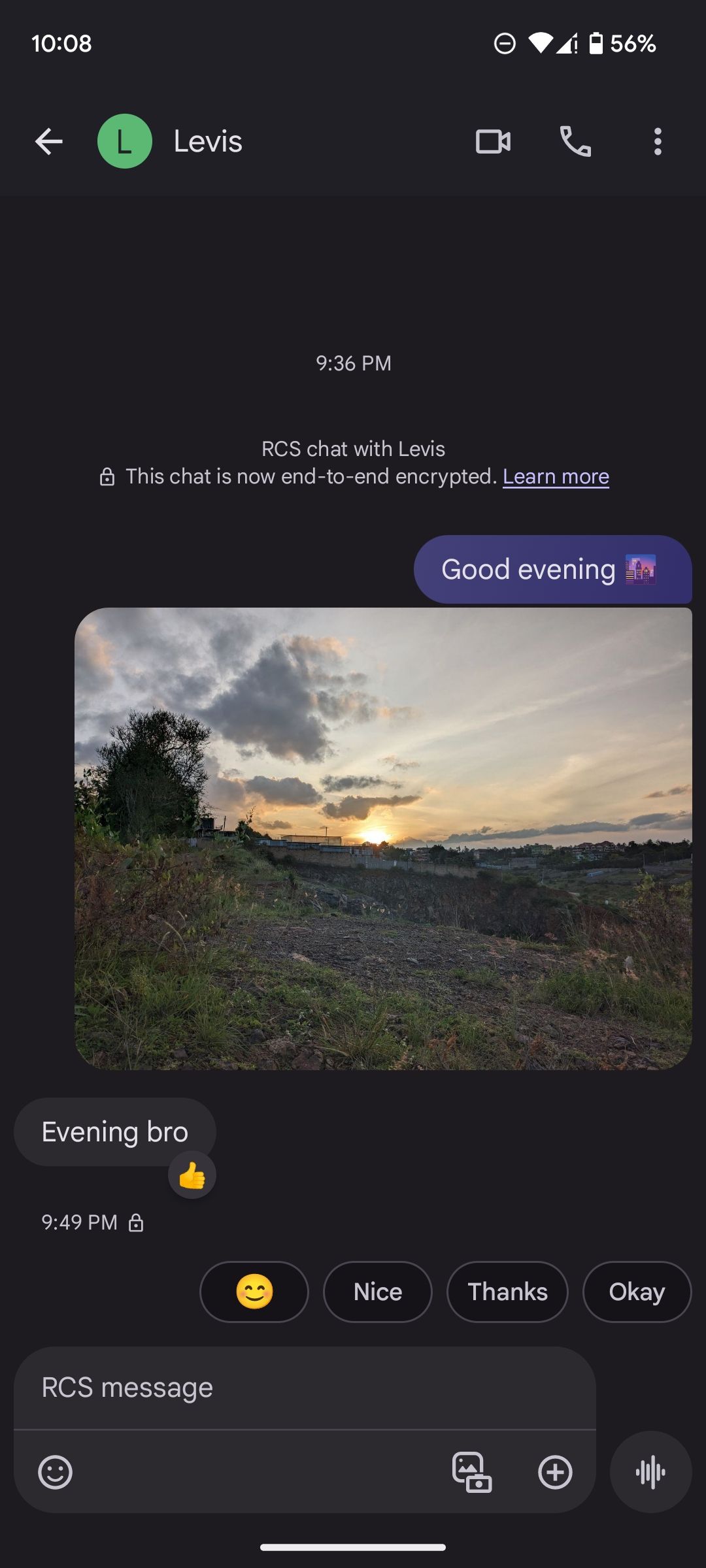
Lastly, RCS supports group messaging, read receipts, message reactions, and a typing indicator, all of which are not available on SMS and MMS. It also supports various data formats, including GIFs, stickers, locations, photos, documents, and videos.
How Do I Get RCS Messages on My Android Phone?
While RCS chats are supported by Android devices running Android 5.0 or later, you may not have the Google Messages app on your phone. Plus, some carriers still don't support RCS, so it's a waiting game in that case. Before turning on RCS, you'll need to check the following:
- Ensure your phone is connected to the internet.
- Download the latest version of Google Messages, Samsung Messages, or your preferred SMS app if it supports RCS.
- If you have multiple SIM cards in your phone, ensure that the same card used for data is the default for calls.
- Make sure your device is running a modern version of Android.
- Set the RCS-compatible app as your default messaging app.
If you're a Google Fi user, you must turn off Google Fi calls and SMS and Fi message sync in Messages. To do this, open the Messages app, tap your profile icon in the top-right corner, and go to Messages settings > Advanced > Google Fi Settings to find the relevant option.
How to Activate RCS Messaging on Android
Let's look at how to activate RCS on Google's Messages app with all of that set. Remember that this might not work in all situations, depending on your device and carrier. Check back often if it doesn't work now.
- Open the Google Messages app and tap your profile icon in the top-right corner.
- From the popup menu, select Messages settings > RCS chats.
- If RCS is available for your location and device, you'll see a slider to enable it at the top. Toggle on Turn on RCS chats.
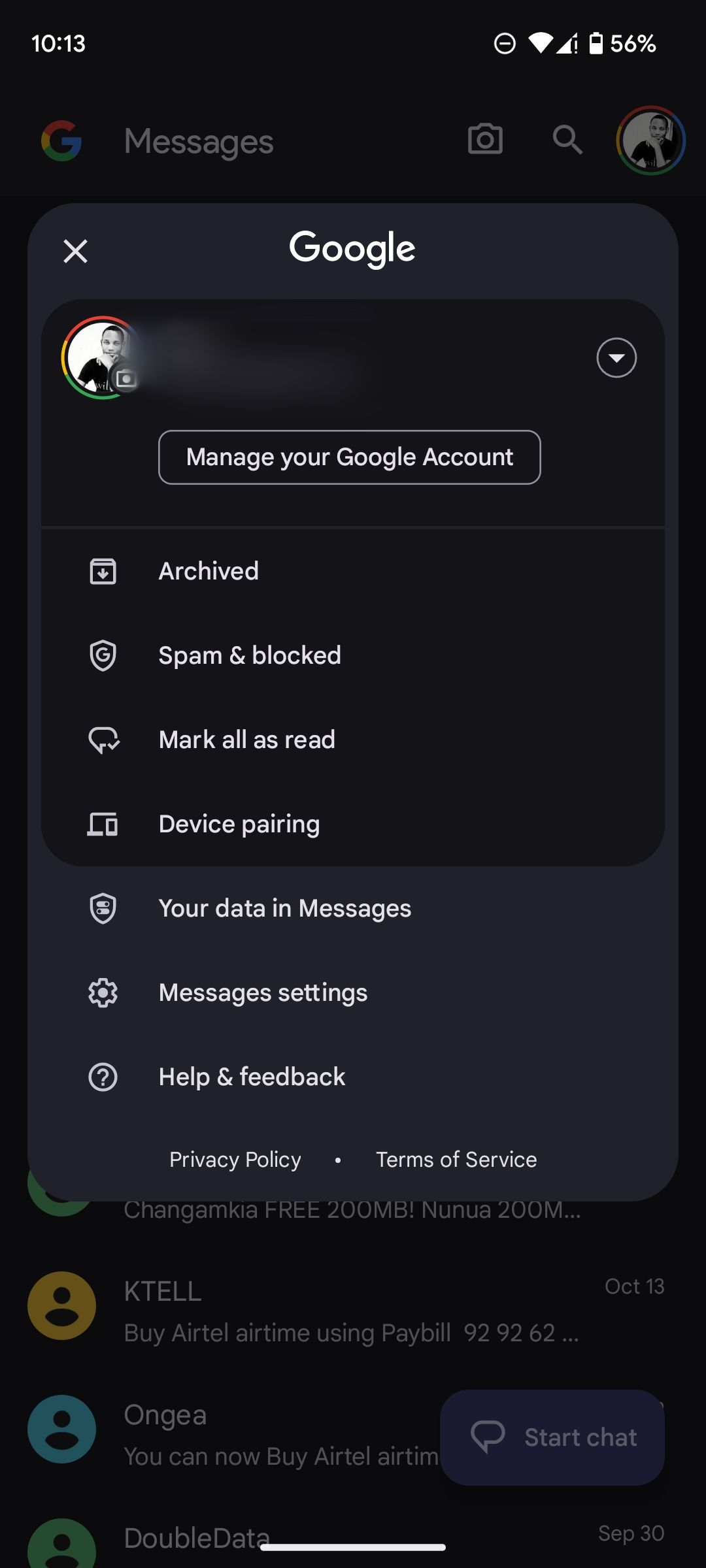
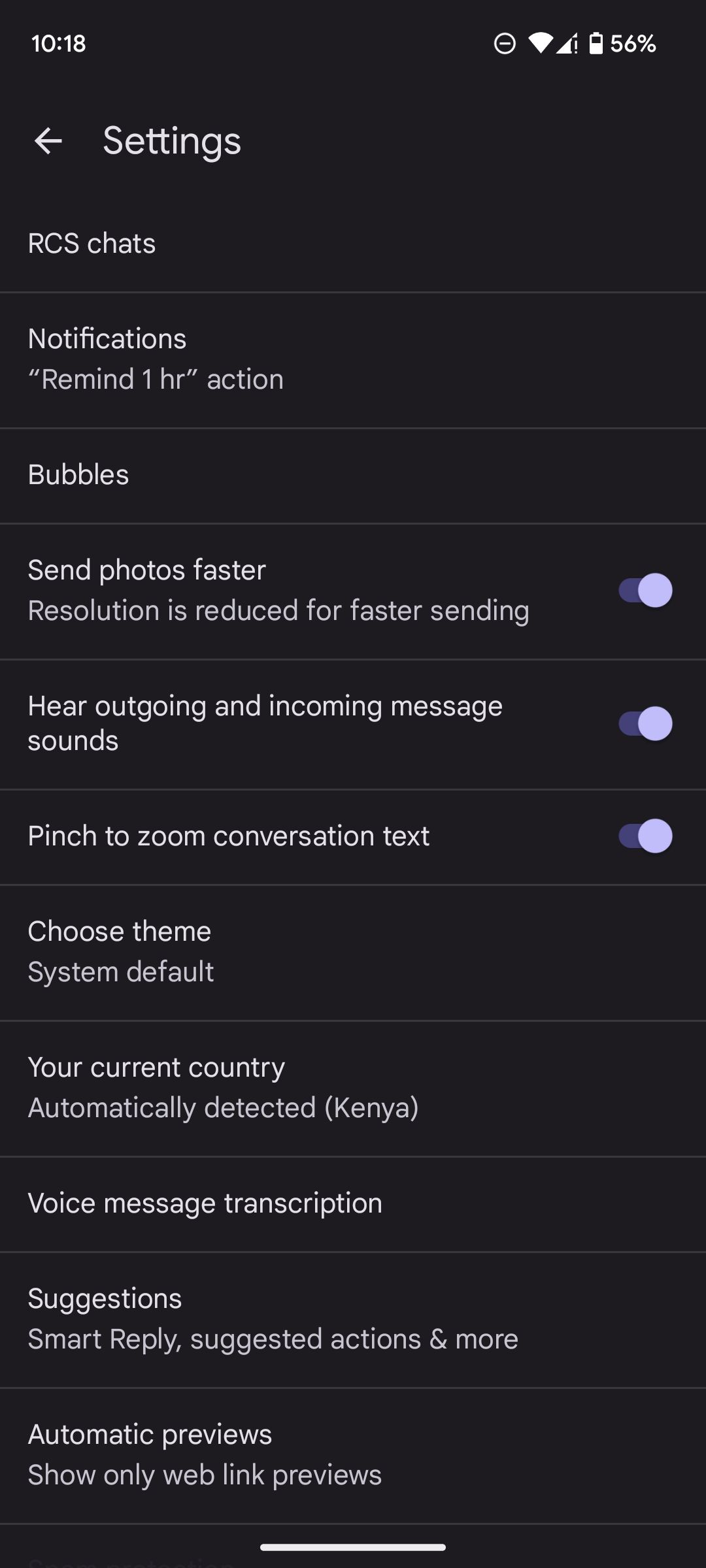
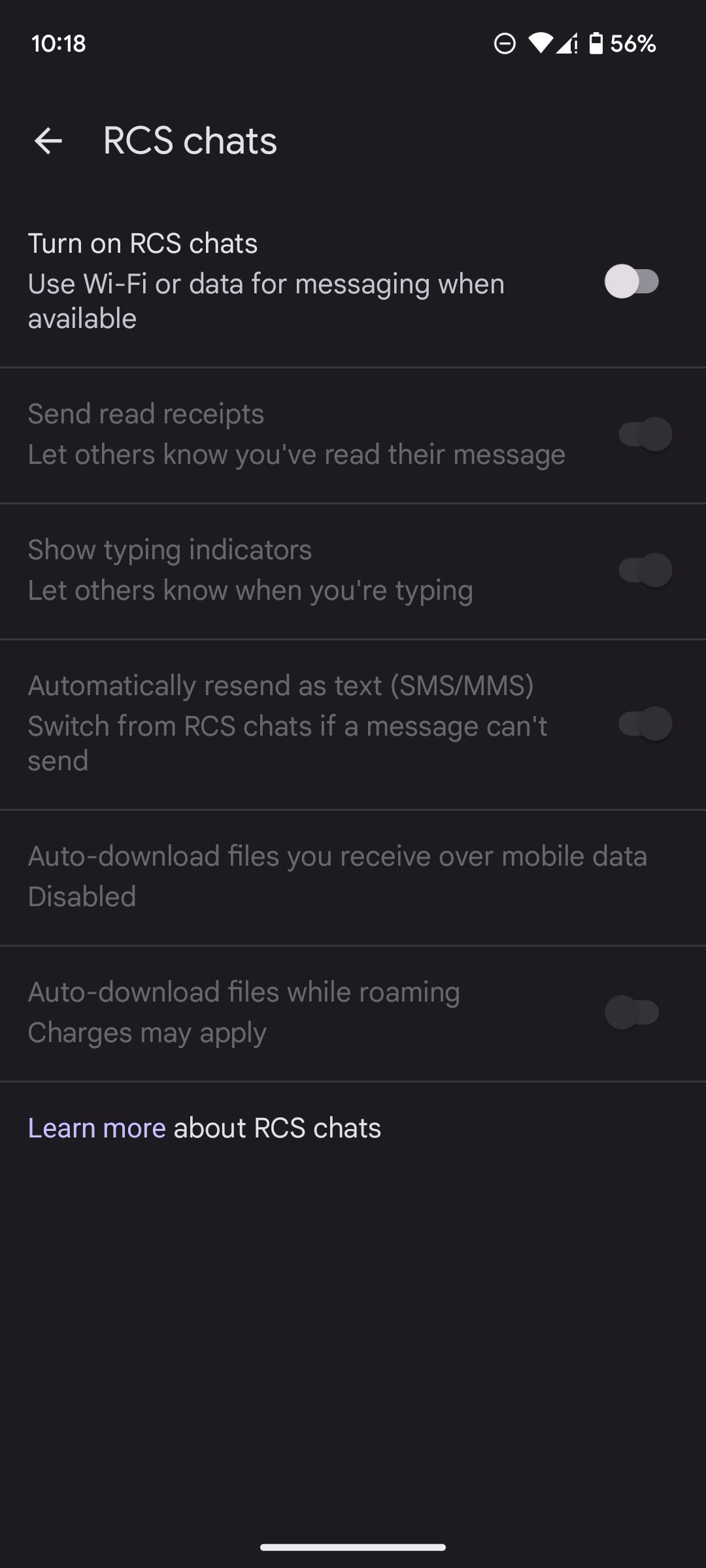
Next:
- Enter your phone number and tap Verify now.
- Give the app a couple of seconds to verify your number. Retry later if it fails to verify after a few minutes.
- Once verification is done, Status will turn to Connected, which indicates RCS is on.
- You can then turn on options like Send read receipts and Show typing indicator if desired to reap the benefits of RCS.
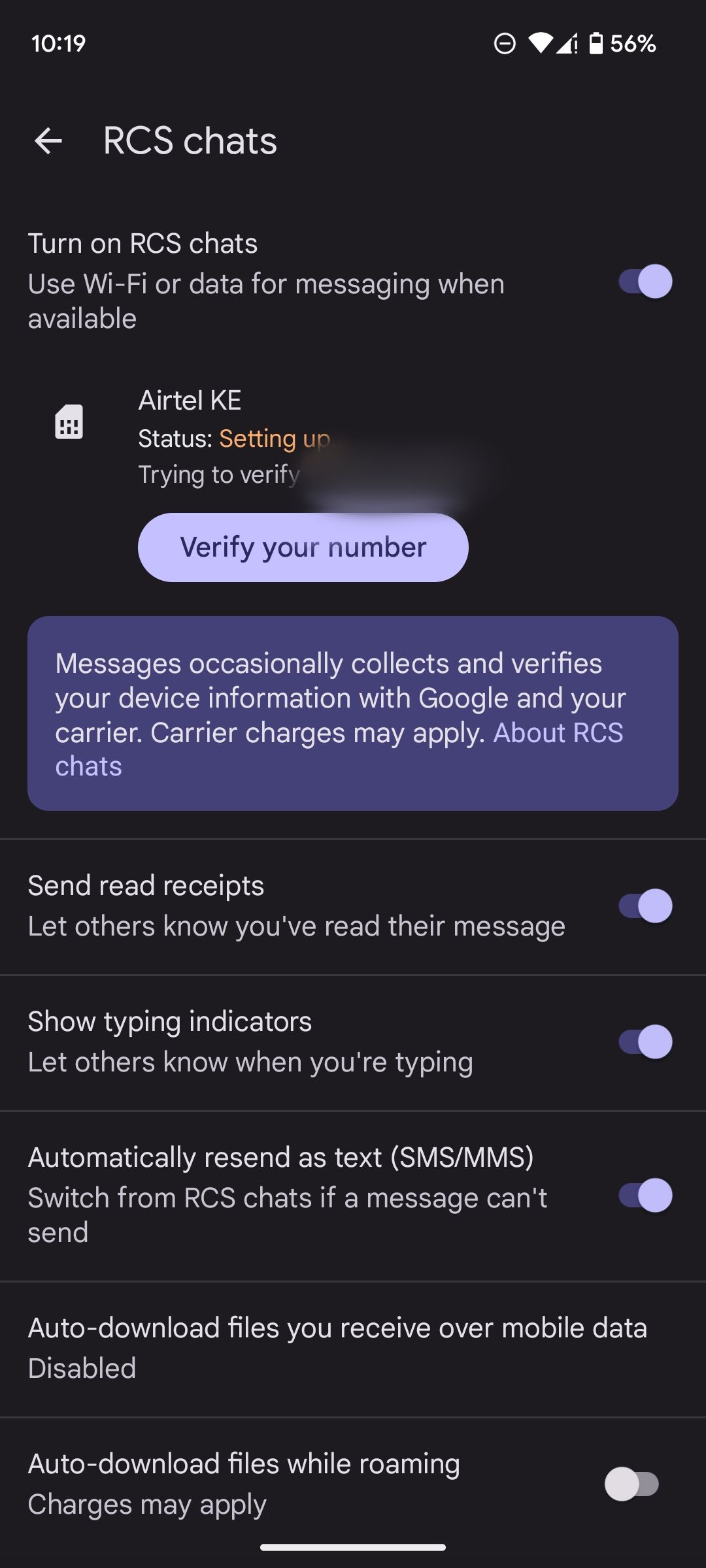
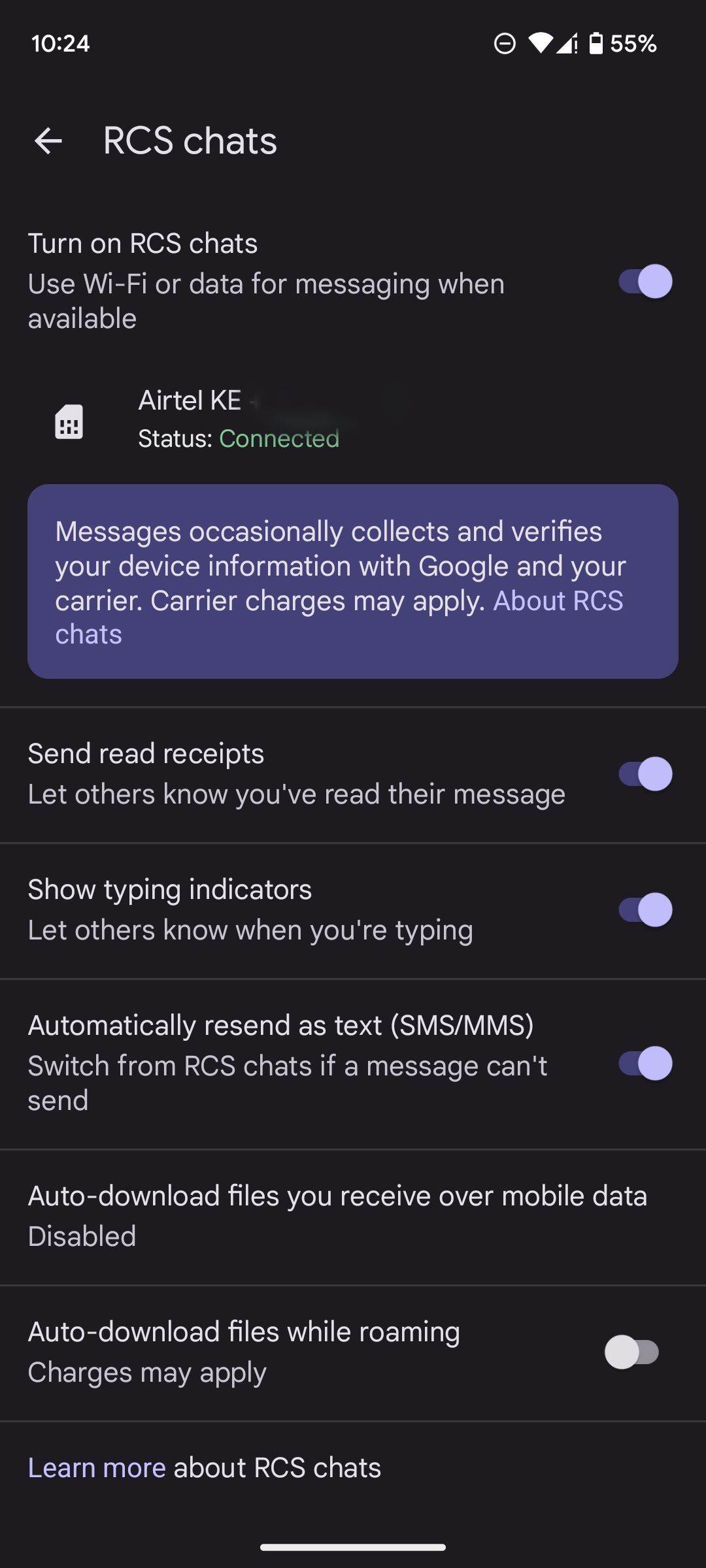
With that done, you can start sending and receiving messages and files via RCS. If the recipient has also set up RCS on their phone, your message will go over this modern protocol. However, if they haven't enabled RCS or their carrier doesn't support it, the Messages app will revert to SMS.
Thanks to RCS, you can send high-resolution images, videos, GIFs, and so on instantaneously via Wi-Fi or mobile data. You can also see when someone is typing, know when they read your message, and react to received messages.

